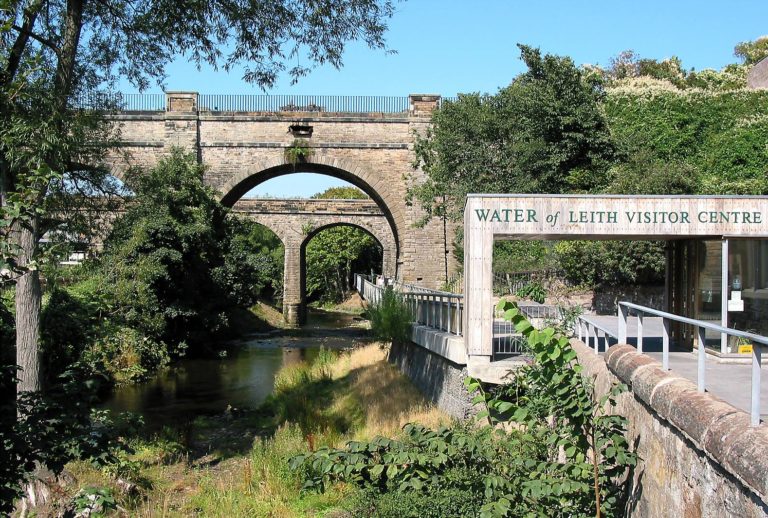Currie was an ancient settlement, the name being derived from either the Celtic “Curagh”, meaning hollow or glen, or Roman ‘Coria’ for meeting place. The village was the centre of a large parish, mainly farmland, ranging from the crest of the Pentlands in the south to the Gogar Burn in the north. The earliest evidence of a settlement here was a Bronze Age razor from 1800 BC, found at Kinleith Mill, and stone cists or caskets from about 500 BC were unearthed at Duncan’s Belt and Blinkbonny nearby. There are a few mentions of this area in mediaeval and early modern documents, one of the first mentions was when Robert of Kildeleith became Chancellor of Scotland in 1249. Kildeleith means Chapel by the Leith, and the name survives today as Kinleith.
On the southern bank, over the river stands Currie Kirk, a place of worship for over 1000 years under the diocese of Lyndysfarne. The first church was dedicated to St Kentigern in 1296, and was an important centre for the Archdean of Lothian as a headquarters in Kildeleith – as Currie was known at that time. St Kentigern is also known as St Mungo (Glasgow’s patron saint) and just downstream of here towards the riverside of the walkway can be found St Mungo’s Well, a natural spring surrounded by a recently renovated stone wall feature.
The present church was built in 1785 at a cost of £433, and stands between two of Currie’s old schools, the one on the left (built in 1802) also serving as the schoolmaster’s house. In front of the church is an interesting sundial, designed by one Robert Palmer, schoolmaster and famous curler (ice not hair), and shows the time in various parts of the world. Here too the recently restored Currie Brig – or bridge – said to be over 600 years old… A good competitor for the oldest construction on the river.
As you continue downstream you will see the small tributary of Poet’s Burn joining the river from the south. There is also a path here leading up to the Pentlands through the sylvan Poets Glen. The name comes from a local man, James Thomson, who was a weaver-poet living near the glen and a contemporary of Scotland’s national bard, Robert Burns.
Further on still you’ll see the site of the old Kinleith Mill – once the largest mill on this section of the river, and the largest employer with 389 workers at its peak. Its demise was felt heavily in the local Currie community when it closed in 1966. After a period as a small local industrial estate, the latest plan is for the building of some 150 houses on the derelict site. A huge weir survives just upstream of here and the first part of the former mill lade can be traced.
Now look for the next audio point, downstream near The Bathroom Warehouse at Juniper Green.
–
Video created by Jim Cross, Edinburgh U3A Movie Makers Group



